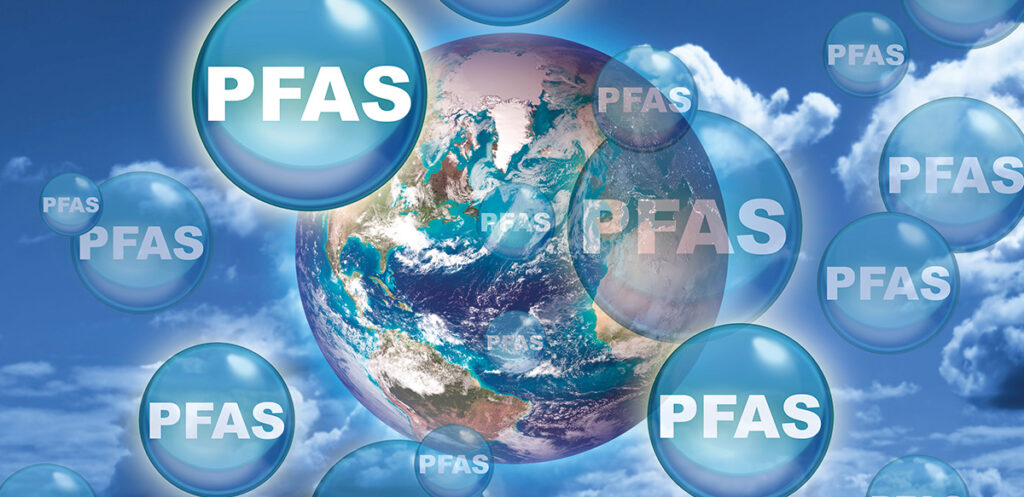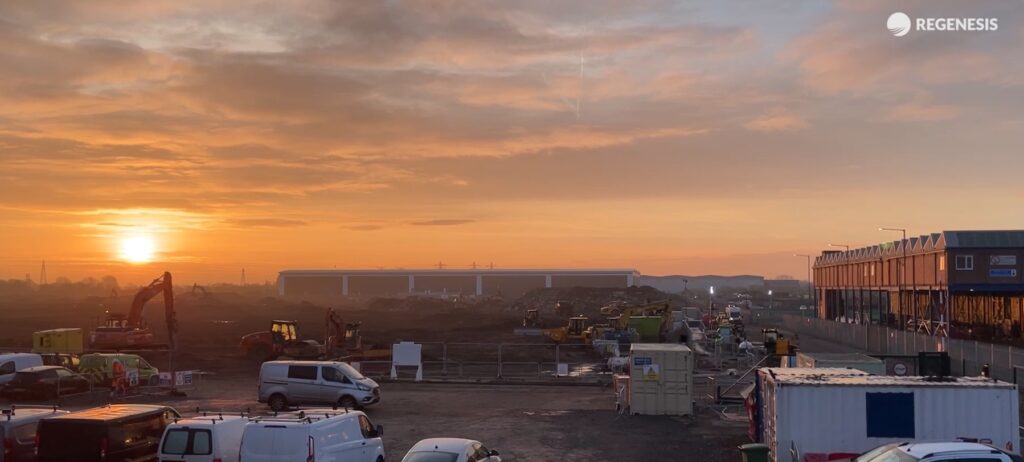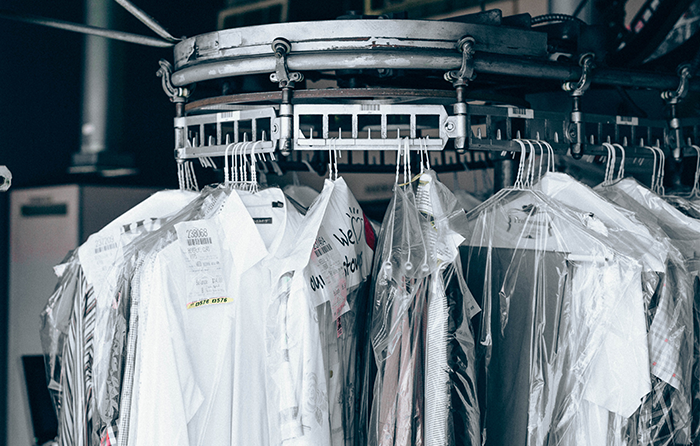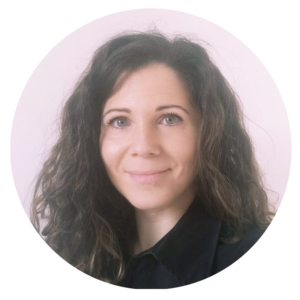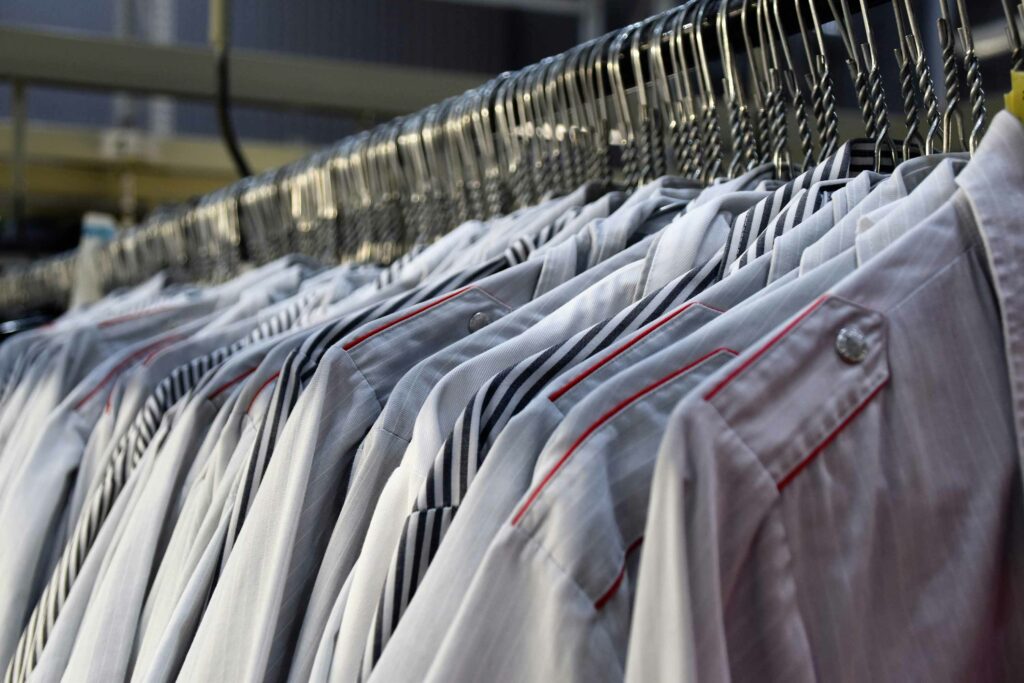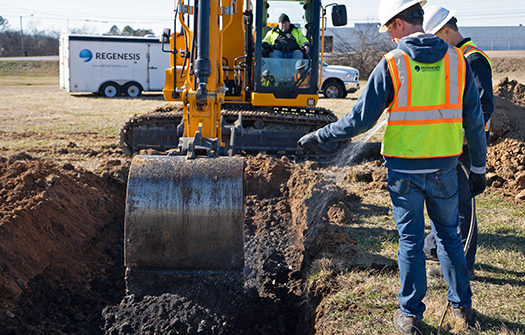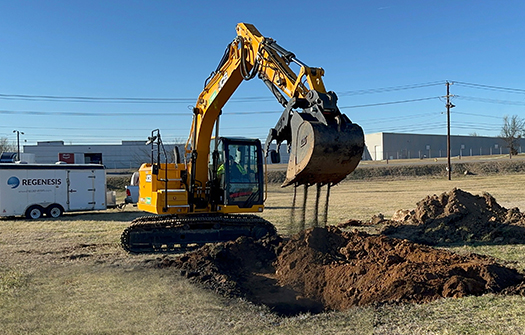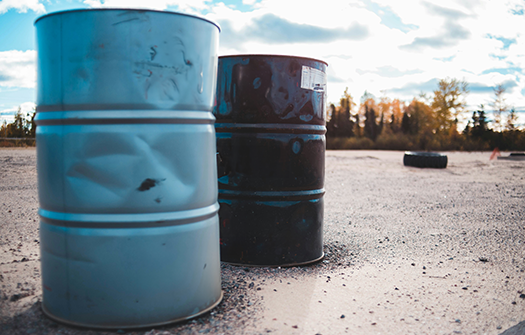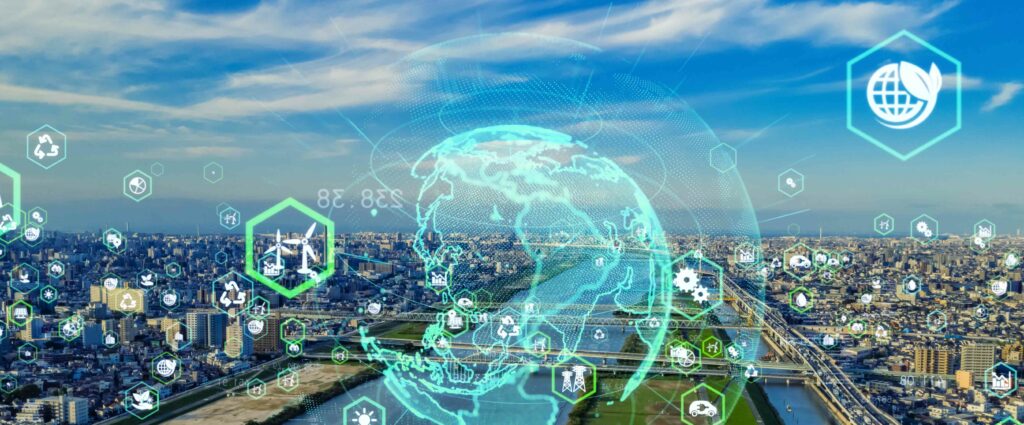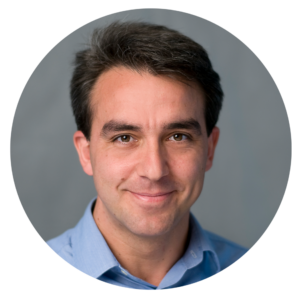Nachhaltigkeit von PFAS-Sanierungen: Vergleich von Sanierungsverfahren
Datum: Mittwoch, 16. Oktober 2024
Uhrzeit: 11.00-12.00 CEST
Sprache: Deutsch
Vortragende: Matthias Sumann (Ramboll) und Mareike Amann (REGENESIS)
In diesem Webinar stellt Matthias Sumann, Principal Consultant bei Ramboll in Deutschland, zusammen mit Mareike Amann von REGENESIS die Ergebnisse einer Studie vor, in der die Nachhaltigkeit von In-situ– und Ex-situ-Sanierungen von PFAS-Kontaminationen verglichen wurde.
Aufgrund der verbreiteten Verwendung, Mobilität und Persistenz stellen PFAS-Kontaminationen ein weltweites Problem dar, das oft große Flächen betrifft. Sanierungsfachleute stehen dabei immer wieder vor der Herausforderung, wie eine so großflächige Kontamination saniert werden kann, ohne dass dabei zusätzliche Treibhausgasemissionen entstehen, die den Klimawandel noch verschärfen.
Eine Sanierung von PFAS konzentriert sich häufig auf Extraktion und Entsorgung, was einen erheblichen CO2-Fußabdruck hinterlassen kann. Die auf kolloidaler Aktivkohle (KAK) basierende Behandlung von REGENESIS ist ein In-situ-Ansatz, der durch eine Reduzierung der Auslaugbarkeit und Migration von PFAS wirkt. Dieser passive Ansatz wurde bisher an mehr als 50 Standorten weltweit eingesetzt und erfordert keine Betriebsenergie und Wartung und erzeugt keinen Abfall.
Um die Nachhaltigkeit dieses In-situ-Ansatzes zu quantifizieren, führte Ramboll eine Lebenszyklusanalyse (LCA) an dem KAK-Material „von der Wiege bis zur Bahre“ durch. Dabei wurden die vorgelagerte Materialbeschaffung, die wesentlichen Herstellungsprozesse und die nachgelagerten Prozesse von Transport und Injektion berücksichtigt. Die LCA wurde gemäß ISO 14044/ISO 14025 mit der Software GaBi Professional erstellt, um die EN 15804-Normen für die Erstellung einer Umweltproduktdeklaration (EPD) zu erfüllen.
Anschließend wurden die Umweltauswirkungen einer tatsächlichen KAK-Anwendung stromabwärts einer PFAS-Quelle auf einem Verkehrsflughafen analysiert. Eine vergleichende Analyse wurde durchgeführt, indem ein alternatives „Pump-and-Treat“-System unter Verwendung zweier Filtrationstechniken entworfen und deren Umweltauswirkungen mit der Software GaBi Professional bewertet wurden. Zusätzlich wurde eine Lebenszykluskostenanalyse (LCCA) unter Verwendung des Kapitalwerts durchgeführt. Schließlich wurde für jeden Sanierungsansatz eine Nachhaltigkeitsbewertung der Stufe 2 nach dem SURE-Modell (SUstainable REmediation = nachhaltige Sanierung) von Ramboll durchgeführt, bei der 15 Nachhaltigkeitsindikatoren berücksichtigt wurden.
Das Webinar bietet Folgendes:
- Eine kurze Einführung zu PFAS-Kontaminanten und den derzeit verfügbaren Sanierungstechnologien
- Einen Überblick über den deutschen Rechtsrahmen
- Eine kurze Einführung in die In-situ-Technologie sowie eine Fallstudie zur Veranschaulichung ihrer Anwendung, einschließlich der Standortbedingungen, Einrichtung der Barriere und der alternativen Konzepte
- Eine Beschreibung des LCA-, LCCA- und Tier2-Nachhaltigkeitsbewertungsansatzes, einschließlich des SURE-Modells von Ramboll, sowie eine Kurzfassung der erhaltenen Ergebnisse
- Diskussion der Ergebnisse und Schlussfolgerungen zur relativen Nachhaltigkeit und den Umweltauswirkungen der jeweiligen Verfahren.
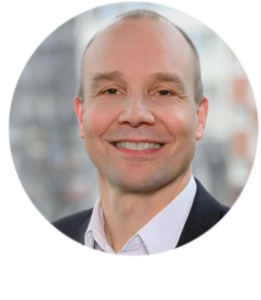 Matthias Sumann
Matthias Sumann
Principal Consultant | Ramboll (Essen)
Matthias Sumann ist Technischer Leiter und verantwortlich für Geschäftsentwicklung in der Abteilung Site Solutions der Ramboll Deutschland GmbH. Er arbeitet seit mehr als 25 Jahren im Bereich Boden & Grundwasser und hat durch seine langjährigen Tätigkeiten in den Niederlanden und Italien als auch in Projekten in Brasilien große internationale Erfahrung, vor allem im Bereich der innovativen Sanierungsverfahren für die Grundwassersanierung. Sein spezieller Fokus liegt auf der Nachhaltigkeit und Resilienz der Sanierungsverfahren. Neben der hauptsächlichen Erfahrung im Umweltconsulting hat er auch ein paar Jahre für spezialisierte Technologieanbieter gearbeitet.
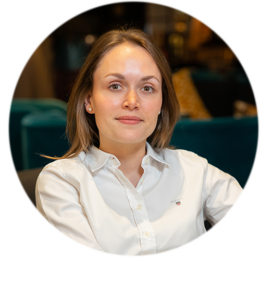 Mareike Amann
Mareike Amann
Senior Marketing Managerin und Ansprechpartnerin DACH-Region | REGENESIS / (München)
Mareike Amann ist Senior Marketing Managerin und Ansprechpartnerin für die DACH-Region (Deutschland, Österreich und Schweiz) bei REGENESIS mit Sitz in München. Sie ist seit 2017 bei dem Unternehmen tätig und bringt ihre vorherige Erfahrung aus Start-ups und Ingenieurbüros ein. In ihrer Rolle ist sie verantwortlich für die Entwicklung und Umsetzung von Strategien, um die Technologien und Projekte von REGENESIS effektiv an die Kunden zu kommunizieren. Neben ihren Marketingaufgaben unterstützt Mareike das technische Team bei Kundenterminen, Projekten und Konferenzen in der gesamten DACH-Region.
Anmeldung
Integrated remediation of a high-concentration TCE plume at a former chemical works
Language: English
Presenter: Jack Shore, Regional Manager Europe, REGENESIS and Sarah Hughes, District Manager UK & Scandinavia, REGENESIS
A large and highly contaminated former chemical works undergoing redevelopment was considered among the most contaminated sites in the UK. The site had high levels of trichloroethene (TCE) contamination in groundwater, including dense non-aqueous phase liquids (DNAPL) and dissolved-phase concentrations above 100,000µg/L. Vertase FLI undertook the remediation of the site including treatment of the >12,000 m2 plume. The target was to show a significant mass reduction and an ongoing declining trend of TCE in groundwater to protect the downgradient river adjacent the site.
A combined enhanced reductive dechlorination and in situ chemical reduction approach was chosen to target this large, highly contaminated plume.
Jack Shore and Sarah Hughes discuss the design, implementation and validation of the remediation works, including:
- Challenges: The scale of the contamination presented a number of obstacles to success, including:
- Treating such a widespread plume cost-effectively
- Effectively remediating such a large contaminant mass – including DNAPL
- Addressing re-equilibration of contamination from the soil and free-phase during treatment
- Avoiding the accumulation of daughter compounds and ensuring their degradation.
- Remedial Design: Combining sulfidated micron scale zero valent iron and large-volume controlled release electron donor substrates, in designs tailored to the contaminant concentrations across the source area covering 8,000m².
- Application: 4 direct push injection rigs and a specialist injection trailer were operated concurrently to co-apply 250,000 litres of substrates into 611 injection points.
- Results: Validation results across the target area showed an 85% reduction in TCE concentrations was achieved over a 12-month period, with full degradation occurring. This exceeded the remedial goal, allowing the site redevelopment to continue as planned.
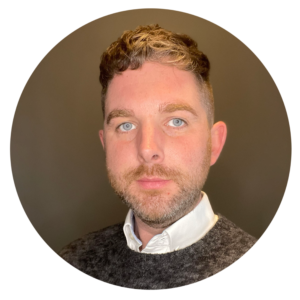 Jack Shore
Jack Shore
Regional Manager, Europe | REGENESIS
Jack Shore is the Regional Manager for Europe at REGENESIS, bringing over 15 years of experience in the contaminated land industry. His career includes roles as a consultant, contractor, and remediation specialist, with a primary focus on designing and implementing in situ remediation solutions. Jack has evaluated over 3,500 sites across Western Europe for their suitability with REGENESIS’ technologies. At REGENESIS, he leads a European team of district managers and technical services personnel. Jack’s technical expertise includes in situ chemical oxidation, bioremediation of organic compounds, and metals immobilisation. He holds a BSc in Environmental Geoscience from Cardiff University and is a Chartered Scientist.
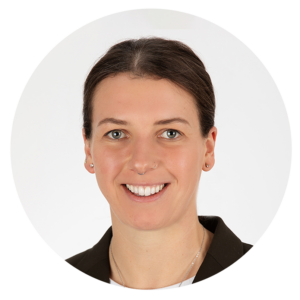 Sarah Hughes
Sarah Hughes
District Manager, UK & Scandinavia | REGENESIS
Sarah is the District Manager for the UK and Scandinavian regions at REGENESIS. She works closely with the company’s talented technical & remediation services teams to deliver innovative in situ remediation solutions for soil and groundwater. With over seven years of experience in the consultancy and remediation sectors, Sarah has a strong background in designing and supervising site investigations, developing in situ remediation designs, and managing large-scale, multi-stakeholder projects across the UK and Scandinavia.
Webinar recording
L’effetto moltiplicatore: come un trattamento sinergico può far raggiungere obiettivi stringenti in plume di solventi clorurati
Lingua: italiano
Presentato da: Ing. Mariangela Donati, Ing. Marcello Carboni (REGENESIS)
In questo webinar esploriamo i vantaggi di combinare adsorbimento in situ (ISS), declorurazione riduttiva potenziata (ERD) e riduzione chimica in situ (ISCR) per proteggere recettori sensibili esterni da una contaminazione da solventi clorurati. Questa combinazione di tecnologie può raggiungere concentrazioni obiettivo incredibilmente basse in un lasso temporale molto breve, evita l’accumulo di sottoprodotti tossici e può essere mantenuta illimitatamente nel tempo, se necessario.
La District Manager Ing. Mariangela Donati è affiancata dal nostro Managing Director Europe Ing. Marcello Carboni, per illustrare come funzionano le tecnologie individualmente e i loro effetti sinergici quando applicate congiuntamente. Ciò viene dimostrato attraverso dati aggiornati di laboratorio e sul campo. E’ incluso anche un caso di studio di un sito industriale in fase di riconversione in un’area urbana in Italia, dove le acque di falda in condizioni di velocità elevata sono state bonificate utilizzando un approccio combinato in una conformazione a barriera, raggiungendo obiettivi di cloruro di vinile di <0,5 µg/L entro pochi mesi dall’applicazione. Un secondo caso di studio evidenzia come è possibile utilizzare barriere multiple per gestire plume allungati, dove la combinazione di tecnologie può essere adattata per fornire un trattamento più accurato ed efficace. In questo caso, le concentrazioni di TCE sono state ridotte rapidamente per proteggere un fiume impattato da un plume lungo più di 500 metri. La presentazione discute anche gli errori da evitare e alcuni aspetti pratici, tra cui le modalità di applicazione, la spaziatura e l’ottimizzazione delle componenti del trattamento.
Le tecnologie colloidali comprese nel trattamento combinato sono:
- PlumeStop, una sospensione colloidale di particelle di carbone attivo delle dimensioni di globuli rossi con una cinetica di adsorbimento insuperabile. Il prodotto riveste l’acquifero e crea un filtro sotterraneo permanente, per rimuovere dalle acque sotterranee l’afflusso di contaminanti.
- S-MicroZVI, un ferro zerovalente iniettabile, solfurato al fine di massimizzare il contatto con i contaminanti e minimizzare la passivazione. Questo reagente si distribuisce in tutta la zona di trattamento per entrare in contatto con e ridurre chimicamente i contaminanti adsorbiti al PlumeStop, riducendo al minimo la formazione di sottoprodotti clorurati.
- AquiFix, un liquido contenente particelle organiche microscopiche progettato per fornire oltre 10 anni di rilascio di elettrodonatori. Il prodotto stimola e supporta una grande biomassa di microrganismi decloruratori che degradano composti genitore ed eventuali sottoprodotti tossici e rigenerano i siti di adsorbimento sul PlumeStop per consentire nel tempo ulteriore adsorbimento e degradazione dell’afflusso dei contaminanti.
La presentazione illustra inoltre i vantaggi di questa strategia di trattamento, che comprendono un basso impatto ambientale, nessuna produzione di rifiuti e minimizzazione dei costi.
Presentato da:
Ing. Mariangela Donati
District Manager, REGENESIS
L’ing. Donati, District Manager di REGENESIS per l’Italia, la Francia e altri paesi del Sud Europa, supporta i clienti nella selezione, nel dimensionamento e nella valutazione economica degli interventi di bonifica mediante le diverse tecnologie REGENESIS disponibili. L’Ing. Donati ha svolto i suoi studi all’Università di Bologna, dove ha conseguito nel 2014 una laurea magistrale in Ingegneria per l’Ambiente e il Territorio, avendo partecipato allo sviluppo di uno studio in ambito di statistica e geostatistica applicate alle concentrazioni di nitrati in acque superficiali presso l’École des Mines de Paris (Francia). Ha maturato successivamente esperienze lavorative pluriennali sia in Italia che all’estero nei settori ambientale, minerario, di geostatistica e di gestione dei siti contaminati nelle diverse fasi previste dagli iter procedurali.
Ing. Marcello Carboni
Managing Director Europe, REGENESIS
L’ing. Carboni, in REGENESIS dal 2011, ha ricoperto fino al 2018 il ruolo di Mediterranean District Manager, fornendo per l’Italia e altri paesi nel Sud dell’Europa supporto tecnico e assistenza nelle applicazioni in campo dei prodotti REGENESIS presenti sul mercato. Nel suo ruolo attuale di Regional Manager coordina dal punto di vista tecnico e commerciale i diversi distretti europei, e valuta potenzialità di sviluppo in nuovi paesi. Precedentemente aveva maturato un’esperienza decennale nella progettazione e nella realizzazione di bonifiche di siti contaminati all’interno di una società italiana di consulenza e di realizzazione interventi. L’ing. Carboni ha conseguito nel 2001 la laurea in Ingegneria per l’Ambiente e il Territorio presso il Politecnico di Torino, avendo seguito parte degli studi accademici presso la Technische Universiteit Delft (TUDelft) nei Paesi Bassi, ed avendo partecipato presso la Universitat Politècnica de Catalunya (UPC) di Barcellona allo sviluppo di un progetto inter-universitario finanziato dalla Comunità Europea relativo allo studio del trasporto all’interno della zona vadosa dei contaminanti residui derivanti dal riutilizzo a fini irrigui di acque di scarico civili trattate.
Registrazione webinar:
The multiplication effect: how synergistic remediation can achieve stringent targets for chlorinated solvent treatment
Language: English
Presenter: Todd Herrington, Director of Product Management, REGENESIS and Marcello Carboni, Regional Manager Europe, REGENESIS
In this webinar, we explore the benefits of combining In Situ Stabilisation (ISS), Enhanced Reductive Dechlorination (ERD) and In Situ Chemical Reduction (ISCR) to protect sensitive offsite receptors from chlorinated solvent contamination. This combination of technologies can achieve incredibly low target concentrations within a very short period, avoids the build up of toxic daughter compounds and can be maintained indefinitely, if needed.
European Regional Manager, Marcello Carboni is joined by our Director of Product Management, Todd Herrington to explain how the technologies work individually and their synergistic effects when co-applied. This is demonstrated through the latest laboratory and field data. This also includes a case study from an industrial site in the centre of an urban area in Italy, where the fast-flowing contaminated groundwater under the site was remediated using a combined application in a barrier formation, achieving vinyl chloride targets of <0.5µg/L, within a few months of application. A second case study from the US, demonstrates how multiple barriers can be used to target elongated plumes, where the combination of technologies can be adjusted to provide the most accurate and effective treatment. In this case, TCE concentrations have been rapidly reduced to protect a river impacted by a >500m long plume. The presentation also discusses practicalities and pitfalls including application approaches, spacing and optimisation of the treatment components.
The colloidal technologies included in the treatment are:
- PlumeStop, a suspension of colloidal activated carbon particles the size of red-blood cells that have unsurpassed sorption kinetics. This coats the aquifer and creates a permanent subsurface filter, to remove the contaminant influx from the groundwater.
- S-MicroZVI, an injectable zero valent iron that has been sulfidated to maximise contaminant contact and minimise passivation. This distributes throughout the target zone to contact and chemically reduce the contamination sorbed to the PlumeStop, minimising the production of chlorinated daughter compounds.
- AquiFix, a liquid containing micron-scale organic particles designed to provide >10 years of electron donor release. This stimulates and maintains a large biomass of reductive dechlorinating bacteria that degrade any toxic daughter compounds and regenerate sorption sites on the PlumeStop to allow further adsorption and degradation of contaminant influx.
The presentation also demonstrates the treatment benefits covering a low carbon footprint, zero waste production and minimised costs.
About the presenters:
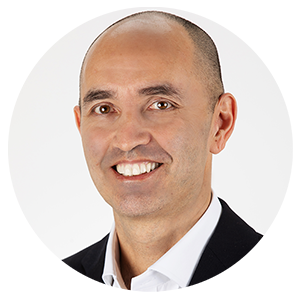 Todd Herrington,
Todd Herrington,
Director of Product Management | REGENESIS
Todd Herrington serves as Director of Product Management at REGENESIS Remediation Solutions and has a +25-year career in in situ remediation. Todd possesses an in-depth understanding of the complexities of in situ remediation, having evaluated or implemented mechanical, biological, and chemical in situ remedial technologies at over a thousand sites. He most recently led the expansion of colloidal activated carbon for hydrocarbon treatment into +40 states and over +16 countries, establishing it as a critical growth technology with still-growing markets and innovative uses. Currently, he provides similar leadership across the entire product range for REGENESIS. With a Master’s in Environmental Engineering and a passion for the environment, he has consistently driven innovation and customer-centric solutions in the remediation technology sector.
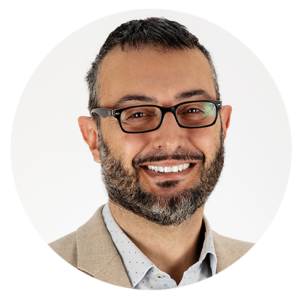 Ing. Marcello Carboni
Ing. Marcello Carboni
Regional Manager, Europe | REGENESIS
Marcello Carboni is the European Regional Manager at REGENESIS. In this role, he coordinates technical and sales activities across Europe, Middle East and Africa. From 2011 to 2018, Marcello covered the role of Mediterranean District Manager, providing support to clients in several Southern European countries. Before joining REGENESIS, Marcello gained ten years of experience in the design and implementation of investigation and remediation activities at an Italian environmental consulting company. Marcello obtained his master’s degree in Environmental Engineering from the Polytechnic University of Turin, Italy in 2001, after spending part of his studies at the Technical University of Delft (TUDelft) in the Netherlands and at the Universitat Politècnica de Catalunya (UPC) in Barcelona, Spain.
Watch webinar recording
SourceStop: Effectieve PFAS-sanering voor grond en grondwater in bronzones
Taal: Nederlands
Presentator: Kris Maerten (REGENESIS)
In dit webinar introduceren we SourceStop®, een nieuwe technologie voor de efficiënte aanpak van met PFAS verontreinigde bodem en grondwater in de bronzone. Door de uitloging en de verspreiding van PFAS van de onverzadigde zone naar en in het grondwater te stoppen, elimineert SourceStop het risico voor de mens en het milieu.
SourceStop is verkrijgbaar in vaste en vloeibare formules waardoor de behandeling kan worden aangepast afhankelijk van de locatie en saneringsdoelstellingen. SourceStop maakt gebruik van door REGENESIS gepatenteerde colloïdale actieve kooltechnologie (1-2 µm) voor een uitstekende verspreiding en permanente coating van aangetaste bodems.
De vaste SourceStop is een samengesteld aggregaat (0,5-2 mm) in poedervorm. Het is ontworpen om uit elkaar te vallen zodra het in de bodem wordt gemengd, zodat colloïdale actieve kool vrijkomt, die vervolgens in de bodem dringt en deze bedekt om verdere PFAS-uitloging te elimineren.
De vloeibare vorm van SourceStop richt zich op verontreiniging in de capillaire en verzadigde zone, om infiltratie en verspreiding in het grondwater te stoppen.
De vloeibare en vaste varianten van SourceStop zijn ontworpen om veilig te kunnen toepassen en de verwerkingstijd tot een minimum te beperken. Ze kunnen onafhankelijk van elkaar gebruikt worden of in combinatie met elkaar. In combinatie met een stroomafwaarts gelegen PlumeStop®- scherm biedt dit een complete, kosteneffciënte, en afvalvrije oplossing voor PFAS-locaties.
Kris Maerten legt de technologie uit en laat laboratoriumstudies zien. Hij demonstreert toepassingsmethodes en geeft voorbeelden van werkzaamheden op locatie. Ook worden de eerste resultaten getoond van een pilootproef met vloeibare SourceStop in de Benelux.
Deze webinar is bedoeld voor milieuadviseurs, milieukundig projectingenieurs, aannemers, probleemhouders, regelgevende instanties. Deelnemingscertificaten/attesten zullen worden verstrekt.
Over de spreker:
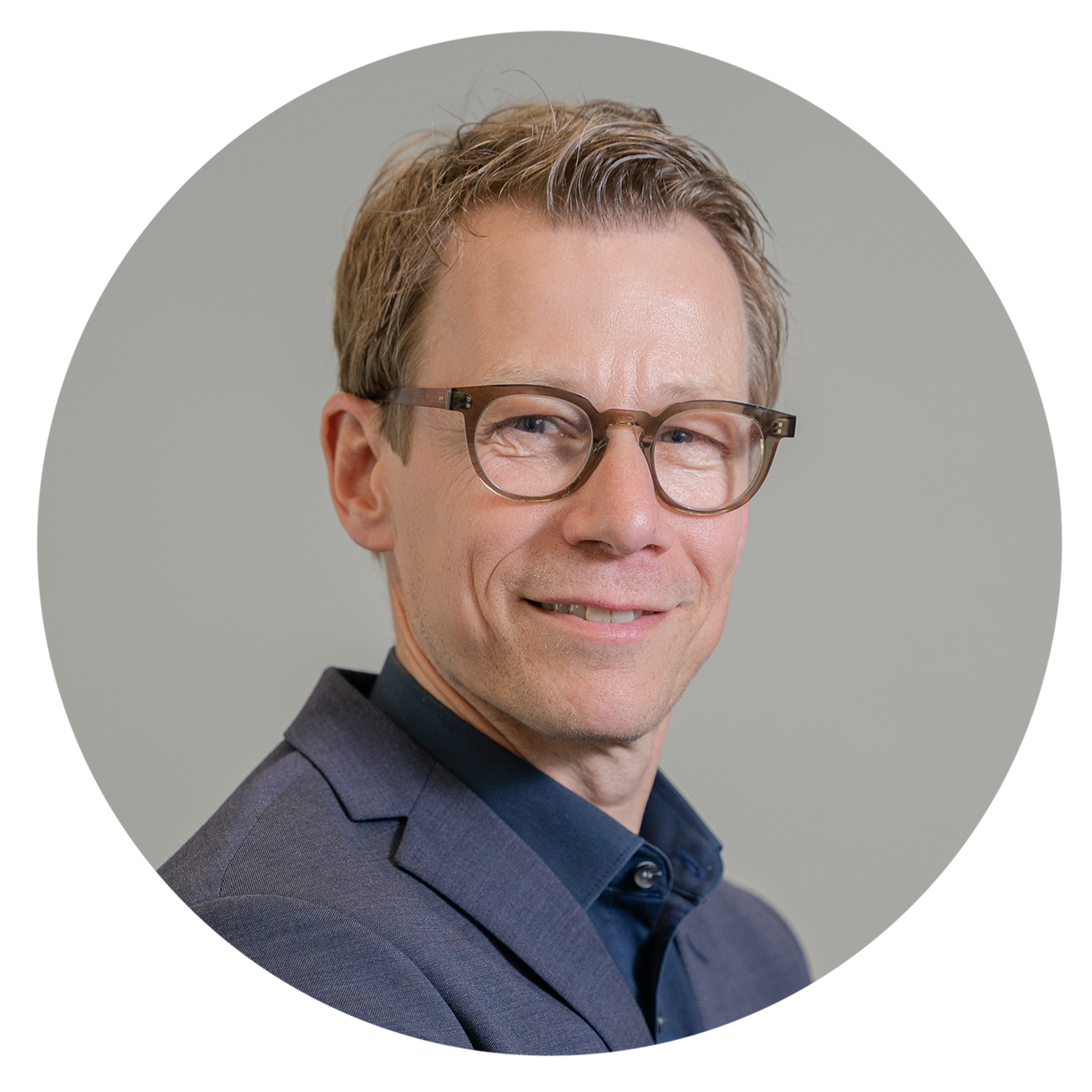 Kris Maerten
Kris Maerten
Technical Manager, Europe | REGENESIS
Als Technical Manager heeft Kris de leiding over een team van ervaren milieukundig ingenieurs die instaan voor alle saneringsontwerpen met de producten van REGENESIS in Europe. Hij heeft zelf meer dan 2000 saneringsontwerpen gemaakt en is betrokken geweest in saneringswerken in een vijftiental landen in Europa en ook internationaal, zowel op het vlak van ontwerp en uitvoering, als evaluatie van de resultaten. Kris is ook District Manager voor de Benelux waar hij naast technisch verantwoordelijke ook commercieel verantwoordelijke is.
Over ons:
REGENESIS is een internationaal bedrijf dat gespecialiseerd is in producten voor in-situ bodemsaneringen. We hebben 25 jaar ervaring in de ontwikkeling en wereldwijde toepassing van producten die in de bodem geïnjecteerd worden voor de sanering van bodem- en grondwaterverontreiniging. Voor meer informatie over onze PFAS-specifieke saneringstechnieken: https://regenesis.com/eur/pfas-remediation-soil-groundwater/
Bekijk Webinar Opname
SourceStop: trattamento efficace dei PFAS per suolo e falda in aree sorgente
Lingua: italiano
Presentato da: Ing. Mariangela Donati, Ing. Marcello Carboni (REGENESIS)
In questo webinar Mariangela Donati e Marcello Carboni introducono SourceStop, una nuova tecnologia per il trattamento efficace in area sorgente di suoli e acque sotterranee contaminati da PFAS. Riducendo significativamente la lisciviazione della contaminazione del suolo e arrestando la migrazione dei PFAS nelle acque sotterranee, SourceStop elimina il rischio per i recettori posti a valle. Disponibile in formulazione solida e liquida, SourceStop consente di personalizzare il trattamento per soddisfare le esigenze specifiche di qualsiasi sito. SourceStop utilizza la tecnologia a base di carbone attivo colloidale di REGENESIS per fornire un’eccellente distribuzione, penetrazione e rivestimento permanente dei terreni contaminati.
La formulazione solida di SourceStop impedisce il trasporto di PFAS nelle acque sotterranee dal punto dello spill, riducendo la lisciviabilità dei PFAS adsorbiti al suolo. È costituito da un aggregato composito di carbone attivo colloidale di REGENESIS e carbone attivo in polvere. Le particelle aggregate hanno una dimensione di circa 0,5-2 mm e possono essere applicate meccanicamente e distribuite nel terreno con attrezzatura da cantiere convenzionale. SourceStop è ingegnerizzato per disgregarsi durante la miscelazione con il terreno rilasciando carbone attivo colloidale, che poi penetra e riveste il terreno riducendo la lisciviazione dei PFAS. SourceStop è progettato per miscelarsi rapidamente e produrre pochissima polvere, rendendo il prodotto sicuro e facile da usare in cantiere.
La formulazione liquida di SourceStop si applica alla contaminazione in frangia capillare al fine di prevenire ulteriore trasporto in falda e fornire riduzioni immediate dei PFAS in falda nell’area sorgente. È composto da particelle di carbone attivo colloidale da 1-2 µm sospese in acqua, che penetrano e rivestono facilmente i terreni saturi, adsorbendo i PFAS e impedendo un ulteriore flusso di massa di PFAS attraverso l’acquifero.
Progettati per essere maneggiati in sicurezza e ridurre al minimo i tempi di applicazione, i formati liquido e solido di SourceStop possono essere utilizzati indipendentemente, in combinazione tra loro o congiuntamente a una barriera PlumeStop a valle per fornire una soluzione completa, economica e senza produzione di rifiuti per i siti PFAS.
Ing. Donati e Ing. Carboni spiegano la scienza alla base del trattamento e mostrano studi di laboratorio per dimostrare i processi coinvolti. Illustrano inoltre dove utilizzare il trattamento, i metodi di applicazione ed esempi di attività in campo.
Presentato da:
Ing. Mariangela Donati
District Manager, REGENESIS
L’ing. Donati, District Manager di REGENESIS per l’Italia, la Francia e altri paesi del Sud Europa, supporta i clienti nella selezione, nel dimensionamento e nella valutazione economica degli interventi di bonifica mediante le diverse tecnologie REGENESIS disponibili. L’Ing. Donati ha svolto i suoi studi all’Università di Bologna, dove ha conseguito nel 2014 una laurea magistrale in Ingegneria per l’Ambiente e il Territorio, avendo partecipato allo sviluppo di uno studio in ambito di statistica e geostatistica applicate alle concentrazioni di nitrati in acque superficiali presso l’École des Mines de Paris (Francia). Ha maturato successivamente esperienze lavorative pluriennali sia in Italia che all’estero nei settori ambientale, minerario, di geostatistica e di gestione dei siti contaminati nelle diverse fasi previste dagli iter procedurali.
Ing. Marcello Carboni
Regional Manager Europe, REGENESIS
L’ing. Carboni, in REGENESIS dal 2011, ha ricoperto fino al 2018 il ruolo di Mediterranean District Manager, fornendo per l’Italia e altri paesi nel Sud dell’Europa supporto tecnico e assistenza nelle applicazioni in campo dei prodotti REGENESIS presenti sul mercato. Nel suo ruolo attuale di Regional Manager coordina dal punto di vista tecnico e commerciale i diversi distretti europei, e valuta potenzialità di sviluppo in nuovi paesi. Precedentemente aveva maturato un’esperienza decennale nella progettazione e nella realizzazione di bonifiche di siti contaminati all’interno di una società italiana di consulenza e di realizzazione interventi. L’ing. Carboni ha conseguito nel 2001 la laurea in Ingegneria per l’Ambiente e il Territorio presso il Politecnico di Torino, avendo seguito parte degli studi accademici presso la Technische Universiteit Delft (TUDelft) nei Paesi Bassi, ed avendo partecipato presso la Universitat Politècnica de Catalunya (UPC) di Barcellona allo sviluppo di un progetto inter-universitario finanziato dalla Comunità Europea relativo allo studio del trasporto all’interno della zona vadosa dei contaminanti residui derivanti dal riutilizzo a fini irrigui di acque di scarico civili trattate.
Registrazione webinar:
PFAS Lessons Learned; Treating a Large-Scale AFFF Site Using In-Situ Colloidal Activated Carbon
Language: English
Presenters: Rebecca Mora (AECOM) and Ryan Moore (REGENESIS)
We are pleased to host Rebecca Mora, AECOM Associate Vice President and Senior Technical Leader, who present the lessons learned on a large-scale Aqueous Film Forming Foam (AFFF) release site, when treated in situ using colloidal activated carbon (CAC). This complicated, high-concentration PFAS site was remediated using one of the longest CAC permeable reactive barriers installed, measuring over 500m long. Rebecca is joined by Ryan Moore, PFAS Remediation Program Director at REGENESIS.
Highlights of this free webinar:
- Approach, lessons learned, and performance results after 2 years of post-injection monitoring from an in situ application of a 500m long colloidal activated carbon barrier to mitigate PFAS migration
- Rapid implementation of remedial solution due to perceived regulatory and public pressure
- Treatment addressing high concentrations of PFAS (up to 550 ppb)
- Remedial objective to reduce PFAS concentrations in groundwater migrating towards nearby off-site drainage ditches
Presented by:
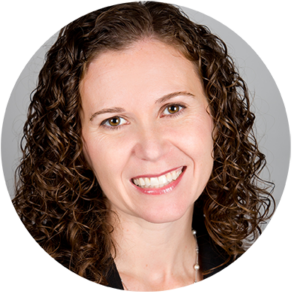 Rebecca Mora
Rebecca Mora
Associate Vice President and Senior Technical Leader, AECOM
Ms. Mora is an Associate Vice President and Senior Technical Leader with AECOM with over 25 years of environmental investigation and remediation experience. She specializes in design and implementation of innovative technologies, particularly for groundwater sites contaminated with current or former emerging contaminants (PFAS, 1,4-dioxane, perchlorate, hexavalent chromium). Most of her career has focused on in situ remediation; with a keen interest in developing cost-effective solutions for industrial and federal clients’ environmental challenges. Ms. Mora received her B.S. in Environmental Engineering from the University of Notre Dame.
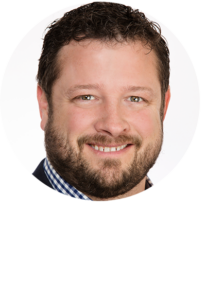
Ryan Moore
PFAS Remediation Program Director, REGENESIS
Ryan Moore has 20 years of experience as an environmental project manager and laboratory account executive relating to multimedia contamination sites throughout the U.S. His experience focused on in situ groundwater and soil treatment, site investigations, corrective action evaluations, operation & maintenance of remediation systems, large soil removal remedial projects, vapor intrusion assessments, and environmental laboratory operations such as QA/QC evaluations, data interpretations, and business development. He has also presented at multiple conferences on in situ remediation including events hosted by Battelle, AIPG, and other environmental associations. Ryan holds a B.S. of Environmental Studies from Manchester College, North Manchester, IN.
Watch webinar recording
SourceStop: effective PFAS treatment for soil and groundwater in source areas
Language: English
Presenters: Paul Erickson and Steve Barnes (REGENESIS)
In this webinar, our Vice President of R&D, Paul Erickson introduces SourceStop, a new technology for effective treatment of PFAS-contaminated soil and groundwater in the source area. By significantly reducing the leaching of soil contamination and halting the migration of PFAS in groundwater, SourceStop eliminates the risk to downgradient receptors. Available in solid and liquid formulations, SourceStop allows treatment to be customised to meet the specific needs of any site. SourceStop uses REGENESIS’ colloidal activated carbon technology to provide excellent distribution, penetration and permanent coating of impacted soils.
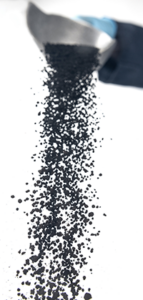 The SourceStop solid format prevents PFAS discharge to groundwater from the spill location, by reducing the leachability of the PFAS sorbed to the soil. It contains a composite aggregate of REGENESIS’ colloidal activated carbon technology and powdered activated carbon. The conglomerated particles are approximately 0.5-2mm in size and can be mechanically broadcast and distributed into soils with conventional site equipment. SourceStop is designed to break apart upon mixing into the soils to release colloidal activated carbon, which then penetrates and coats the soils to reduce PFAS leaching. SourceStop is engineered to mix rapidly and produce very little dust, making it safe and easy to use onsite.
The SourceStop solid format prevents PFAS discharge to groundwater from the spill location, by reducing the leachability of the PFAS sorbed to the soil. It contains a composite aggregate of REGENESIS’ colloidal activated carbon technology and powdered activated carbon. The conglomerated particles are approximately 0.5-2mm in size and can be mechanically broadcast and distributed into soils with conventional site equipment. SourceStop is designed to break apart upon mixing into the soils to release colloidal activated carbon, which then penetrates and coats the soils to reduce PFAS leaching. SourceStop is engineered to mix rapidly and produce very little dust, making it safe and easy to use onsite.
The liquid form of SourceStop targets capillary fringe contamination preventing further discharge to groundwater and providing immediate PFAS reductions in the source area groundwater. It is composed of 1-2µm colloidal activated carbon particles suspended in water that easily penetrate and coat the saturated soils, adsorbing the PFAS to prevent further PFAS mass flux through the aquifer.
Engineered to be safe to handle and minimise application time, SourceStop liquid and solid formats can be used independently, in combination, or with a downgradient PlumeStop barrier to provide a complete, low-cost, zero-waste solution for PFAS sites.
Paul explains the science underpinning the treatment and show laboratory studies to demonstrate the processes involved. Paul is joined by Steve Barnes, the Director of Remediation Operations in the US, who explains where to use the treatment, demonstrate application methods and show examples of site work.
Presented by:
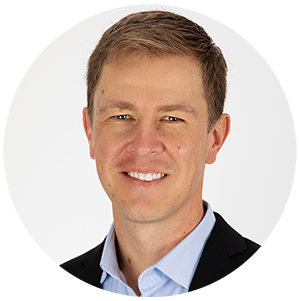 Paul Erickson, PhD
Paul Erickson, PhD
Vice President of Research and Development, REGENESIS
Dr Paul Erickson is the Vice President of Research & Development with REGENESIS, overseeing the commercialization of new environmental solutions to address complex remediation challenges. In his time with REGENESIS, Dr Erickson has led the development of a number of innovative remediation products and technologies, including PetroFix and FluxTracer. Dr Erickson earned a BSc degree in Chemistry from Florida State University, an M.Sc.in Chemistry from the University of Minnesota, and a PhD in Environmental Chemistry from ETH Zurich.
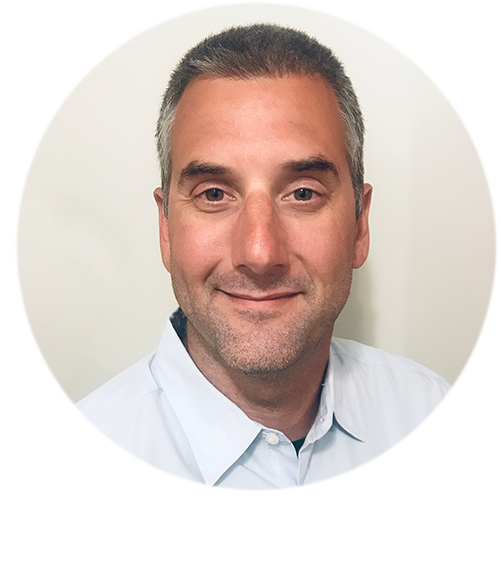
Steve Barnes
Director of Remediation Operations, REGENESIS
Steve Barnes has over 20 years of experience as an environmental geologist/project manager relating to soil, sediment, and groundwater contamination throughout U.S. while working under various regulatory agencies. For the last few years, Steve Barnes has been responsible for managing regional project managers while overseeing operations of the REGENESIS North America Remediation Service Division. Steve Barnes has a bachelor’s degree in Geology from Southern Methodist University and a Master of Business Administration from the University of Notre Dame.
Watch webinar recording
Guest Webinar: Introducing the Concawe LNAPL toolbox
Language: English
Presenters: Richard Gill (Concawe), Markus Hjort (Concawe) and Gareth Leonard (REGENESIS)
In this webinar, our guest speakers Richard Gill, Chair of the Soil and Groundwater taskforce at Concawe and Markus Hjort, Science Associate for Water, Soil and Waste for Concawe, introduce the Concawe LNAPL Toolbox.
Understanding the behaviour of Light Non-Aqueous Phase Liquid (LNAPL) in the subsurface is complex and Concawe have compiled a unique collection of useful tools, calculators, data, and resources to help scientists and engineers better understand how to manage LNAPL at their sites. The web-based toolbox uses a three-tiered approach that provides access to over 20 different LNAPL tools (key infographics, nomographs, calculators, mobility models, videos, checklists, and other formats) with different levels of complexity and time requirements. These tools allow better understand of key questions such as:
1. How much LNAPL is present?
2. How far will the LNAPL migrate?
3. How long will the LNAPL persist?
4. How will LNAPL risk change over time?
5. Will LNAPL recovery be effective?
6. How can one estimate Natural Source Zone Depletion (NSZD)?
The LNAPL Toolbox therefore allows better understanding of the LNAPL onsite and informs the required response.
Gareth Leonard, Managing Director of REGENESIS in Europe, then briefly discusses sites on which LNAPL may be managed by NSZD or active recovery and the residual dissolved phase contamination is driving a downgradient risk. Here a PetroFix permeable reactive barrier can be used to sorb and biologically degrade the migrating plume. The mechanism of treatment is discussed, and case studies used to exemplify the remedial approach.
Presented by:
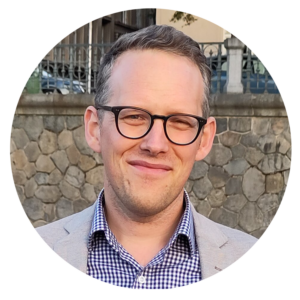 Richard Gill
Richard Gill
Chair of the Soil and Groundwater taskforce, Concawe
Environment and Carbon Capability Advisor, Shell Global Solutions
Richard Gill is the Chair of the Soil and Groundwater taskforce at Concawe and an Environment and Carbon Capability Advisor at Shell Global Solutions. Richard has been Chair since 2022 and an active contributor to the taskforce since 2020. For the majority of his career in Shell he has provided technical soil and groundwater support to a range of businesses around the world. Prior to Shell, Richard completed a PhD focused on the innovative groundwater remediation technology electrokinetic-enhanced bioremediation.
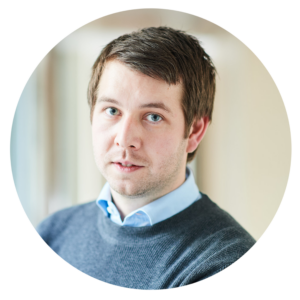 Markus Hjort
Markus Hjort
Science Associate for Water, Soil and Waste, Concawe
Markus Hjort joined Concawe in 2017 and has since then been working as a Science Associate for Water, Soil and Waste. In Concawe, Markus is leading and coordinating research projects in the area of Water, Soil and Waste relevant to the European Fuel Manufacturing Industry. Prior to joining Concawe, Markus worked for AnoxKaldnes/ Veolia Water Technologies as an R&D Engineer wastewater treatment for 5 years. Markus has an MSc degree in bioprocess engineering from Lund University (Sweden), which includes one year studies at TU Delft (Netherlands).
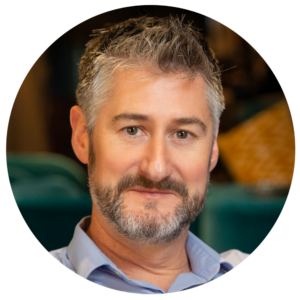
Gareth Leonard
Managing Director, REGENESIS Europe
Gareth is the Managing Director of REGENESIS in Europe. He leads a dedicated team of in situ remediation specialists to provide solutions for the contaminated land industry. Gareth has over 20 years contaminated land experience, having provided successful remediation designs and implementation for over a thousand projects across Europe, the Middle East and Africa.
Watch webinar recording
La necessità di una bonifica sostenibile dei PFAS: confronto tra l’impatto ambientale dell’immobilizzazione in situ e del Pump & Treat
Lingua: italiano
Presentato da: Dott. Daniele Susanni, Principal e Operation Manager, RAMBOLL; Ing. Marcello Carboni, Regional Manager Europe, REGENESIS
In questo webinar il Dott. Daniele Susanni di RAMBOLL presenta con Marcello Carboni di REGENESIS i risultati di uno studio che mette a confronto tecnologie di bonifica in situ ed ex situ per il trattamento di una contaminazione da PFAS.
La contaminazione da PFAS è una problematica globale estremamente diffusa a causa dell’uso estensivo, della mobilità e della persistenza di tali contaminanti. La sfida che si trovano ad affrontare i professionisti del settore ambientale è come bonificare una contaminazione così diffusa evitando la produzione di ulteriori emissioni di gas serra, esacerbando il fenomeno del cambiamento climatico.
La bonifica dei PFAS si focalizza spesso su processi di estrazione e smaltimento, che possono potenzialmente avere una carbon footprint significativa. Il trattamento di REGENESIS mediante l’utilizzo di carbone attivo colloidale (CAC) è un approccio in situ che agisce riducendo la lisciviabilità e la migrazione dei PFAS. Utilizzato in più di 40 siti in tutto il mondo, questo approccio passivo non richiede l’uso di energia elettrica, interventi di manutenzione operativa né comporta la produzione di rifiuti.
Per quantificare la sostenibilità di questo approccio in situ, Ramboll ha completato un’analisi del ciclo di vita (LCA) sul materiale CAC, di tipologia “dalla culla alla tomba”, considerando l’approvvigionamento del materiale a monte, i processi di produzione e i processi a valle di trasporto e iniezione. La LCA è stata effettuata ai sensi della ISO14044/ISO14025 utilizzando il software GaBi Professional al fine di soddisfare gli standard EN15804 per creare una Dichiarazione Ambientale di Prodotto (EPD).
Successivamente, è stato analizzato l’impatto ambientale di un’effettiva applicazione di CAC a valle idrogeologico di una sorgente PFAS in un aeroporto commerciale europeo. È stata condotta un’analisi comparativa progettando un sistema alternativo Pump and Treat utilizzando due tecniche di filtrazione e valutandone l’impatto ambientale mediante il software GaBi Professional. Inoltre, è stata completata un’analisi del costo del ciclo di vita (LCCA) utilizzando il valore attuale netto. Infine, per ciascun approccio di bonifica è stata completata una valutazione di sostenibilità di Livello 2 utilizzando il modello SURE di Ramboll, considerando 15 indicatori di sostenibilità.
Il webinar introduce la tecnologia, descrive la bonifica del sito utilizzato in questo caso di studio, comprese le condizioni del sito, l’installazione della barriera iniettiva e le progettazioni P&T alternative. Viene mostrata una descrizione dell’approccio e dei risultati della valutazione di sostenibilità LCA, LCCA e Tier 2. I risultati vengono discussi e si traggono conclusioni sulla sostenibilità e sull’impatto ambientale di ciascun processo.
Presentato da:
Dott. Daniele Susanni
Principal e Operation Manager, RAMBOLL
Il Dott. Susanni, in RAMBOLL (precedentemente Environ) dal 2009, ricopre attualmente il ruolo di Principal e Operation Manager per il settore Site Solution, supportando i clienti nelle attività di caratterizzazione e bonifica di siti contaminati, alla ricerca di soluzioni innovative e sostenibili dal punto di vista ambientale e finanziario. Il Dott. Susanni ha conseguito la laurea in Scienze Geologiche presso l’Università Statale di Milano nel 1997 e il Dottorato di Ricerca in Geologia Applicata presso l’Università di Ferrara nel 2001. Ha maturato 25 anni di esperienza nella consulenza ambientale con competenze nella caratterizzazione di terreni ed acque sotterranee, nell’analisi di rischio e nella bonifica, nel supporto tecnico-legale, nella valutazione e gestione dei georischi, nelle due diligence ambientali e nel permitting. Ha lavorato con clienti industriali e commerciali, in una varietà di settori che includono Oil&Gas, chimica e petrolchimica, gasometri, farmaceutica, automotive, lavorazione metalli, elettronica, trattamento rifiuti e real estate. Il Dott. Susanni ha una vasta esperienza nel coordinamento di team internazionali su diversi progetti in vari paesi.
Ing. Marcello Carboni
Regional Manager Europe, REGENESIS
L’ing. Carboni, in REGENESIS dal 2011, ha ricoperto fino al 2018 il ruolo di Mediterranean District Manager, fornendo per l’Italia e altri paesi nel Sud dell’Europa supporto tecnico e assistenza nelle applicazioni in campo dei prodotti REGENESIS presenti sul mercato. Nel suo ruolo attuale di Regional Manager coordina dal punto di vista tecnico e commerciale i diversi distretti europei, e valuta potenzialità di sviluppo in nuovi paesi. Precedentemente aveva maturato un’esperienza decennale nella progettazione e nella realizzazione di bonifiche di siti contaminati all’interno di una società italiana di consulenza e di realizzazione interventi. L’ing. Carboni ha conseguito nel 2001 la laurea in Ingegneria per l’Ambiente e il Territorio presso il Politecnico di Torino, avendo seguito parte degli studi accademici presso la Technische Universiteit Delft (TUDelft) nei Paesi Bassi, ed avendo partecipato presso la Universitat Politècnica de Catalunya (UPC) di Barcellona allo sviluppo di un progetto inter-universitario finanziato dalla Comunità Europea relativo allo studio del trasporto all’interno della zona vadosa dei contaminanti residui derivanti dal riutilizzo a fini irrigui di acque di scarico civili trattate.

 Americas
Americas Europe
Europe Français
Français Deutsch
Deutsch Italiano
Italiano Español
Español